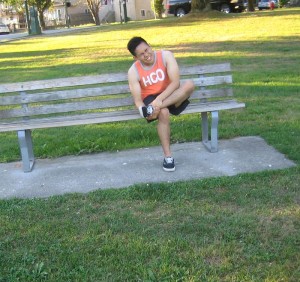A bunion or hallux valgus is best described as a deformity involving the big toe and foot bones, resulting to a bump that develops at the base of the toe. If the individual uses constricting or pointed shoes, they are usually blamed for causing the bunions. Nevertheless, individuals who develop bunions due to an inherited foot structure that makes them susceptible for the development of bunions. Fallen arches or flat feet can also pull the tendon of the toe sideways, resulting to the formation of bunion.
Bunions and toes
If there is a bunion, the joint at the foundation of the big toe which is the first metatarsophalangeal joint broadens and thrusts in an outward manner. The uppermost point of the initial toe moves toward and oftentimes beneath the second toe. The second toe will push against the third toe. As the foot takes on an abnormal shape, using regular footwear causes constant friction at different contact points.
Footwear and movements
It is important to note that every step flexes the initial metatarsophalangeal joint. Any motion that is repetitive such as running, walking or even standing can aggravate the ligaments, joints and tendons. In some cases, bursitis often develops which is the sore swelling and inflammation of the joint. Arthritis can develops as the cartilage starts to deteriorate.

The compression of the foot in shoes that are narrow and point and high heels can further aggravate the bunions, resulting to painful calluses and corns. It is important to cushion the affected joint with padding and if possible, wear low-heeled shoes that have enough space for the toes. These are helpful in preventing the compression of a bunion as well as avoiding irritation of the skin.
Diseases and conditions
There are certain diseases and conditions that can hasten the deterioration of the joint while at the same time weaken the ligaments surrounding the big toe. When it comes to gout, the uric acid crystals accumulate in the joints, particularly in the foot. If you want to learn how to relieve the symptoms of gout, click here. Rheumatoid arthritis is a condition in which the immune system erroneously attacks the joints and degrades the cartilage which can aggravate a bunion. In some cases, a bacterial or fungal infection in the blood can settle in the joint and lead to tissue damage but this is uncommon. Those who have flat feet will not cause the development of bunions, but can hasten the development and increase the severity of the deformity.
Bunions among children
Bunions that develop at the age of 10-15 years old often affect both feet. The adolescent bunions are connected with the manner on how the feet are formed and not necessarily painful. Individuals who have bunions in childhood are more likely to recur in adulthood which might be due to the angle between the first and second foot bone.
It is important to note that all weight-bearing movements can contribute to the formation of bunions. Using constricted footwear can also contribute as well. Children and adolescents who have bunions are recommended with corrective footwear until the feet finishes growing.
